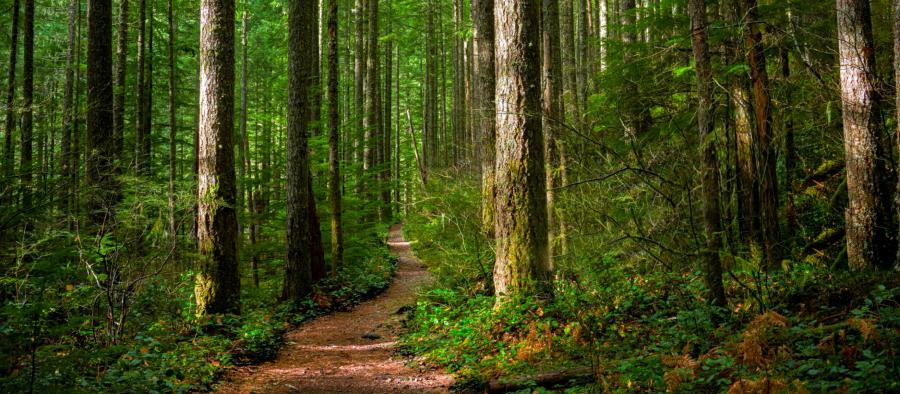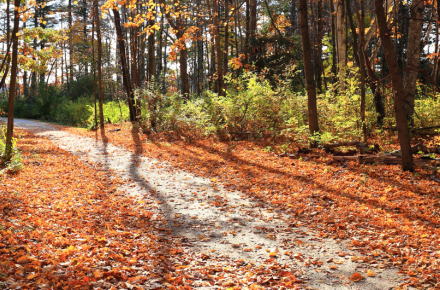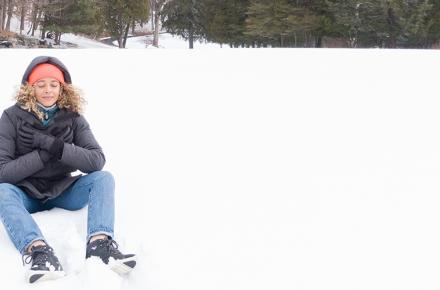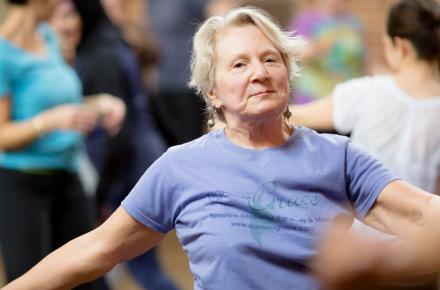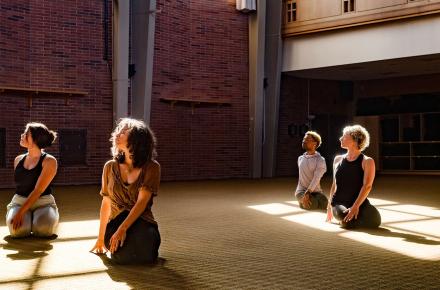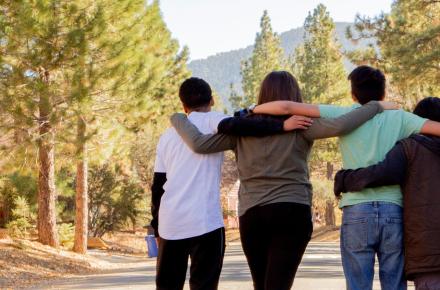Five Symptoms of Nature Deficit Disorder, and How Mindfulness Can Help

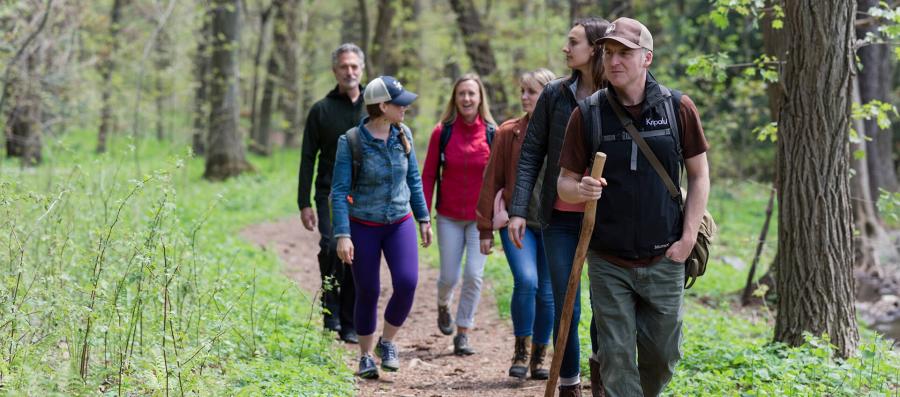
Kripalu School of Mindful Outdoor Leadership
My vision for the Kripalu School of Mindful Outdoor Leadership was catalyzed by my experience of being at a yoga conference in New York City and realizing, in the middle of a yoga class, that despite being engaged in this mindful practice, I had no sense of connection to the larger world around me. I could have been on the International Space Station, I felt so removed from the earth. In some ways, the yoga and mindfulness community is just as nature deprived as the rest of our society.
That’s no surprise when the average American spends 90 percent of their life indoors and 11 hours a day on screens. Our collective tech addiction is a huge factor in the epidemic of Nature-Deficit Disorder—a term coined by Richard Louv, author of Last Child in the Woods. “Nature-deficit disorder describes the human costs of alienation from nature, among them: diminished use of the senses, attention difficulties, and higher rates of physical and emotional illness,” Louv wrote.
But mindful time in nature can reconnect us with the “more-than-human world” in which we live. Here are five symptoms of Nature Deficit Disorder, and practices that can help counteract this deprivation that has become so endemic to our culture.
The symptom: Directed Attention Fatigue
Directed attention is when we willfully hold our attention on a single focus, filtering out other distractions in the environment. Most of us live lives of directed attention; our jobs require us to sit and focus on one thing for long periods of time, which typically leaves us distracted and irritable. Research shows that directed attention fatigue lowers our self-regulation and makes us more aggressive, less tolerant, and less sensitive to social cues.
The antidote: Practice nature meditation as a form of “fascination attention.”
Researchers Stephen and Rachel Kaplan describe “fascination attention,” in which we don’t try to focus but simply allow our attention to be drawn to and fro, as the remedy for directed attention fatigue. “If you can find an environment where the attention is automatic, you allow directed attention to rest,” Stephen explains. “And that means an environment that's strong on fascination.” Humans evolved in an environment that required fascination attention for survival; we needed to be able to focus on multiple pieces of information in our surroundings in order to avoid danger, find food, etc.
To balance directed attention with fascination attention, incorporate nature meditation into your daily routine. A foundational practice of the Kripalu School of Mindful Outdoor Leadership, nature meditation is done with the eyes open. Sitting at the foot of a tree in the forest, activate conscious breath as you bring your attention to what’s moving on the earth, through the woods, and in the sky. Rather than a single-pointed meditation focus—as on a flame or a mantra—this is a practice of open awareness.
You don’t have to be outside to benefit in this way from the presence of nature. In one study, Rachel found that office workers with a view of nature liked their jobs more, enjoyed better health, and reported greater life satisfaction.
The symptom: Place Blindness
First identified by Richard Louv, “place blindness” describes the way in which people are losing their relationships with the land on which they live. Today, the digital world has become more real to us than the ecology outside our homes and workplaces. Place blindness begins in childhood; kids spend far less time in unsupervised outdoor play. According to the Nature of Americans National Report, children 8 to 12 years old spend three times as many hours with computers and televisions each week as they do playing outside.
The antidote: Visit a sit spot all year round.
Relieve place blindness by choosing a “sit spot”—a place in your yard or a nearby park that you can return to again and again, in every season, observing the land and the behavior of the flora and fauna as time passes. Even five or 10 minutes a day (or as often as possible) spent in your spot will result in a growing bond with the specific landscape in or near your home. You can do a more formal practice of nature meditation in your sit spot, or simply observe the activity around you and notice what changes from day to day or week to week.
The symptom: Sensory Anesthesia
Another result of our indoor, screen-focused lifestyle is what Louv calls “sensory anesthesia”—becoming disconnected from the feedback that we receive from nature through our five senses. This disconnection has both individual and societal ramifications: When we lose our visceral, tactile relationship with nature, we are less likely to notice changes in our immediate or larger environment, and thus less able to respond skillfully to what’s happening.
The antidote: Walk barefoot on the earth.
Walking with awareness and without shoes can be a profound experience. Recently, a guest at Kripalu shared with me that it had been 24 years since he walked barefoot on the grass. When he did so during our session, he almost fell four or five times; all those years of walking in shoes had changed his proprioception. He no longer remembered how to keep his balance on the ground without the support of his shoes.
Another great way to counteract sensory anesthesia is to meditate on the sound of water—a creek babbling or the ocean waves. Close your eyes or maintain a soften gaze, connect with your breath, and let your attention rest on the sound. Or you might take a mindful walk incorporating the sense of touch—running your fingers over the bark of trees, the moss on a rock, the pebbles underfoot, the smooth surface of a stone. I call it “hiking with your hands.”
The symptom: Species Loneliness
We evolved in relationship with other beings on this planet, but today we engage in very limited contact with other species, beyond our household pets. If we don’t have a bond with the wild creatures with whom we share the natural world, we won’t realize it if they begin to disappear. Place blindness extends from the land to the living things that move upon it.
The antidote: Observe the life around you.
Whether you live in an urban, suburban, or rural environment, you can watch birds and squirrels, frogs and lizards. Listen for birdsong early in the morning and at dusk. Keep your eyes open for the tracks of animal friends in the snow or mud, observing the stories they leave for us on the ground as they pass.
When we do nature meditation practice by the brook at Kripalu, there’s always a frog who begins to croak into the silence. I can’t tell you how meaningful that is for people—the experience of sharing a moment with a non-human relative.
The symptom: Taking Without Giving
We often speak of nature in terms of what it can give us—health benefits, recreation, fuel for our fires or vegetables for our meals. Beginning a few hundred years ago, organized religion began inculcating the idea of nature as something that needed to be tamed or subdued.
Moreover, we typically think of the natural world as inert—a collection of objects rather than living beings. We refer to animals as “it.” By contrast, the Lakota and other Native American cultures often think of not only animals but also stones, trees, and soil as alive.
The antidote: Offer gratitude and care.
We can reframe our relationship with the more-than-human world by consciously offering gratitude for what we receive, and by acknowledging the lives of the living things around us. True, we might not know an animal’s gender on sight, but we could ask when we note its tracks or scat, “I wonder who that was?” or note, “A friend passed by.”
At its most basic essence—the breath—our relationship with nature is reciprocal: We inhale and take in oxygen from the trees; we exhale and the trees take in the carbon dioxide they need. We can practice occasionally bringing that interaction into conscious awareness, along with gratitude for what we receive in this exchange of prana.
“Knowing that you love the earth changes you, activates you to defend and protect and celebrate,” writes Robin Wall Kimmerer, author of Braiding Sweetgrass: Indigenous Wisdom, Scientific Knowledge, and the Teachings of Plants. “But when you feel that the earth loves you in return, that feeling transforms the relationship from a one-way street into a sacred bond.”
Explore trainings in the Kripalu School of Mindful Outdoor Leadership.
© Kripalu Center for Yoga & Health. All rights reserved. To request permission to reprint, please email editor@kripalu.org.





